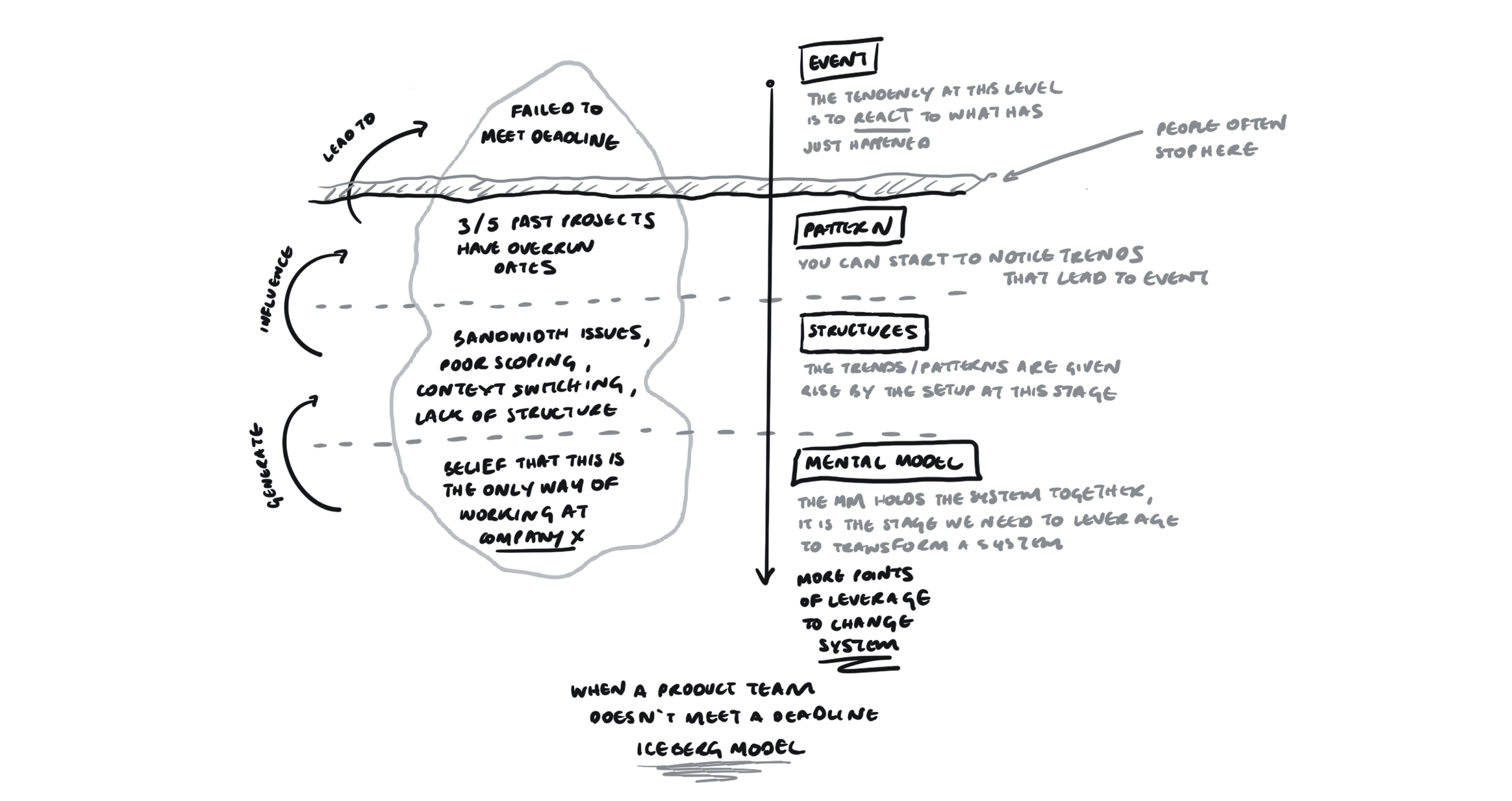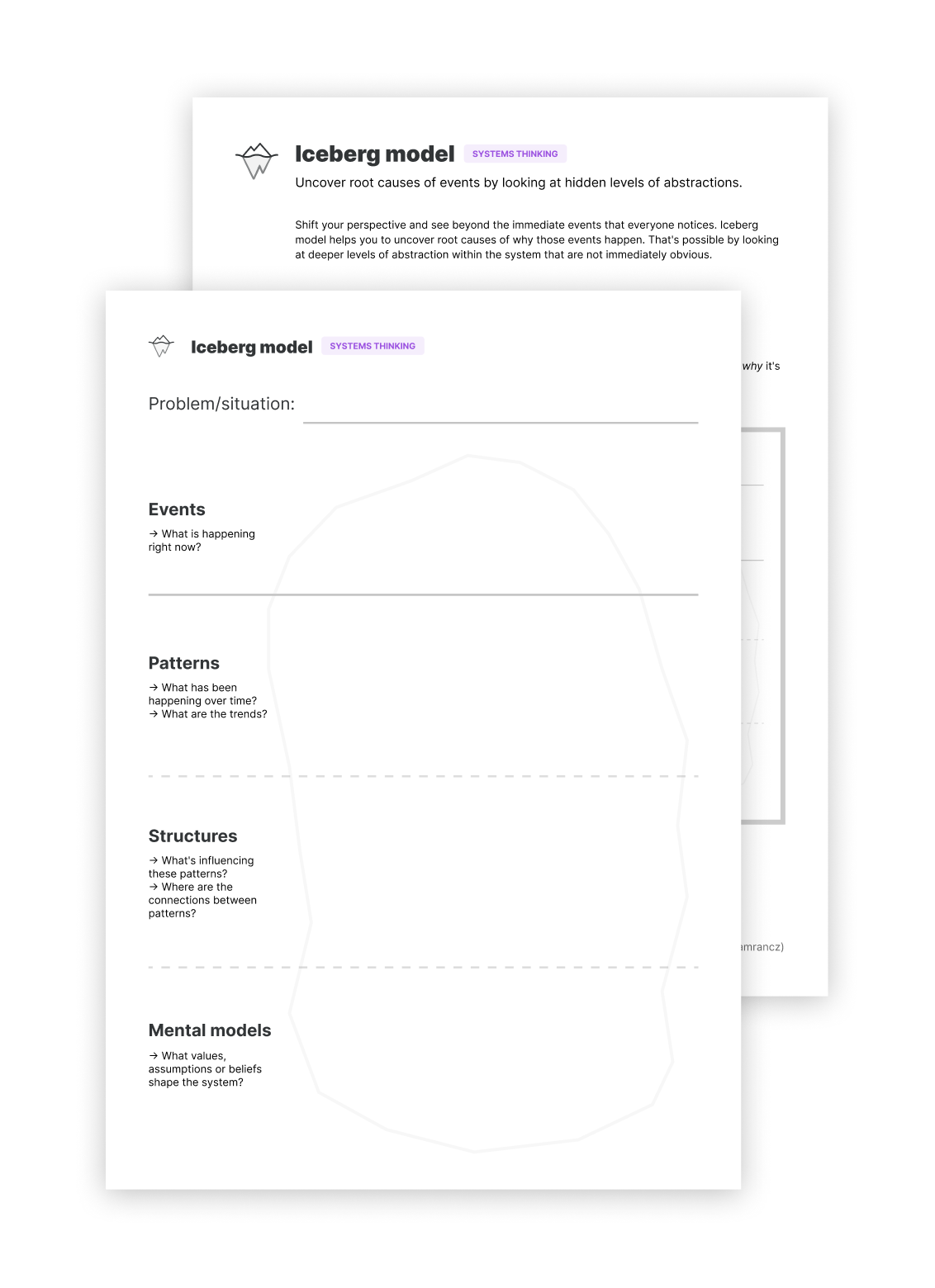Iceberg Model
SYSTEMS THINKINGAddressing problems only on their event level is often not enough. The real causes are often hidden from plain sight.
Iceberg model is a tool that allows you to shift your perspective and see beyond the immediate events that everyone notices. It helps you to uncover root causes of why those events happen. That's possible by looking at deeper levels of abstraction within the system that are not immediately obvious.
How to use it
Iceberg model consists of four levels:
- Events
- Patterns
- Structures
- Mental models

Example of an iceberg model by Justin Farrugia
Looking below individual events, you can see trends over time—patterns. They are the clue for understanding the system structures that are behind those patterns. Structures are the relationships and feedback loops inside a system. These structures are in turn based on the underlying mental models of people.
Events and patterns show you what is happening. Structures and mental models tell you why it's happening.
The deeper you can go in the iceberg, the more leverage you'll have.
Investigate all four levels
Here are some questions to help you understand each level within a certain problem or situation.
Events:
- What is happening right now?
Patterns:
- What has been happening over time? What are the trends?
Structures:
- What's influencing these patterns?
- Where are the connections between patterns?
Mental models:
- What values, beliefs or assumptions shape the system?
It's important to note that answering these questions will likely require some research and digging. Especially when it comes to the mental models which are hard to document, let alone see in plain sight.
Example of the Iceberg model by Justin Farrugia
Example
Let's look at a real-world example to better understand how the iceberg model works.
Suppose there are a couple of bugs in the feature your product team just released. That's a single event. Your instinct might be to react to it and start fixing them. That's obviously not enough if you want to prevent it from happening in the future.
If you look back in time, you see that every released feature comes with several bugs. That's a pattern. Digging deeper, you find that teams don't plan for testing before releasing a feature. The QA only happens after a release. Teams also typically have tight deadlines to ship a feature. These are structures of the system.
Investigating further, you discover that teams value shipping on time over the quality of their work. The tight deadlines are imposed by managers and teams believe it's not their place to push back.
As you can see, by looking beyond immediate events, you are able to find a root cause of a problem. You now have much more leverage for solving the problem.
Put this tool to practice
I've created a template (in PDF and Miro) for applying Iceberg model in practice. It includes a step-by-step reference guide with an example.
You can get it with Untools Vault which gives you instant access to all Untools premium templates and monthly exclusive deep-dives about thinking tools.
Preview of the template and guide:
